85 F. high temperature in the Twin Cities Thursday.
81 F. average high on August 13.
83 F. high on August 13, 2014.
August 13, 1964: A taste of fall over area with 26 in Bigfork and 30 in Campbell.
Medium Rare
For
only the third time this summer the mercury will top 90 degrees later
today. Throw in a sauna-like dew point in the mid-70s and it should feel
like 95-100F by late afternoon. Smoke from western wildfires will keep
our sky hazy.
I've gone ahead and
issued a Small Cooler Advisory and Hot Vinyl Car Seat Warning. Doctor
Douglas recommends immediate evacuation to your favorite lake, pool or
the nearest Dairy Queen.
Remember,
we're just getting a taste; faint hiccups of heat - the epicenter of a
smothering heat blob staying just south of Minnesota into next week.
Nothing like Germany, where more than 100 cities tied or broke all-time
record highs in the last week. Berlin hit 102F, the hottest ever
recorded. Keep in mind most Europeans don't have A/C. Maybe in their
cars, but not at home. My relatives in Bavaria have been taking long air
conditioned drives thru the countryside to cool off.
Steamy heat today and Saturday gives way to a few rough T-storms Sunday. Computer models bring another surge of heavy rain into town Tuesday and Wednesday. ECMWF guidance pulls a sweatshirt-worthy(!) burst of cool air into Minnesota in 9 days.
What a strange and wonderful summer it's been.
Will El Nino 2015 Rival The Strongest Year on Record?
Right now the warming of the Pacific looks comparable to the 1997-98 El
Nino; according to NOAA there's a 90% probability it will linger into
the winter. Here's an excerpt from
CNN.com: "...
The
waters of the eastern Pacific Ocean are heating up, scientists say,
building towards a strong El Niño event that could rival the intensity
of the record 1997 event that wreaked weather-related havoc across the
globe, from mudslides in California to fires in Australia. According to
the latest forecast released Thursday by NOAA's Climate Prediction
Center, this year's El Niño is "significant and strengthening..." (Image credit above:
NOAA).
Where Are The Hurricanes? El Nino Keeps a Tight Lid on the Atlantic Hurricane Season. Tropical guru Brian McNoldy has a good post at
Capital Weather Gang
explaining how a combination of wind shear from a brewing Super El Nino
and Saharan dust is inhibiting hurricane formation in the Atlantic -
here's the intro: "
We’re nearly halfway through the typical Atlantic
hurricane season, and yet not a single hurricane has formed. It’s not a
totally abnormal season yet, but it is a testament to the intensity of
the strengthening El Niño in the tropical Pacific, and the season is
becoming more of an outlier with each passing day that we don’t see a
hurricane. As expected, hurricane activity has been notably suppressed
thanks to El Niño. Much to the delight of many coastal residents,
conditions across the typical formation zones have been hostile to
hurricanes — a situation that does not look like it will be changing any
time soon..."
Map credit above: "
So
far this hurricane season has been crickets. Enhanced water vapor
satellite image over the Atlantic from 11:45 am EDT today. Medium to
darker blues indicate dry air in the mid-upper troposphere." (NRLMRY).
Surge in "Danger Days" Just Around The Corner.
Minnesota will be in better shape than much of the USA - one benefit of
being a suburb of Canada. Connecting the dots, looking at the trends
and models,
Climate Central has produced an effective time lapse that shows where we may be heading; here's an excerpt: "...
A
danger day is when the combination of heat and humidity (also known as
the heat index) make it feel like it’s 105°F or hotter. Warming
temperatures are about to push U.S. cities into a new regime where
danger days happen regularly. Of the 144 U.S. cities Climate Central
analyzed, only 12 of them averaged more than one danger day per year
since 1950. Most of those cities are clustered in the South where
humidity tends to be worst in the morning while temperatures peak in the
late afternoon. But by 2030, a whopping 85 cities — home to nearly
third of the U.S. population -- are projected to deal with at least 20
danger days annually..."
Today: Most Uncomfortable Day?
The combination of 90-degree heat and dew points ranging from 70-75F
will make it feel like 95-100F by mid afternoon; a few models are
hinting at 100-105F heat indices by late afternoon (if the sun stays out
we have a chance of reaching these values later today). Source: Iowa
State.
Wet, Stormy Spell Next Week.
Take advantage of a mostly-dry sky today and Saturday, because storms
come rumbling back into town Sunday ahead of a week cool front. Another
heat surge passing to our south spins up another storm capable of heavy
showers and T-storms the middle of next week. The GFS model also
suggests a push of much cooler air after August 23 or so. Source: NOAA.
Watering Optional - Again.
NOAA model ensembles print out some 1.5 to 2" rains (as an average)
over northern Iowa and southern Minnesota over the next 7 days; another
sloppy bulls-eye over the Gulf Coast and Florida.
 More June than August
More June than August.
Models are in fairly good agreement, suggesting a heavy rain event by
next Wednesday and Thursday, the GEFS ensemble hinting at over 4" of
rain. What month is this again. Graphic:
Aeris Enterprise.
Two Days Complaining About The Heat - Then a Correction.
I still suspect that European guidance above is running a few degrees
too cool for today and Saturday. If the sun is out we should hit or top
90F both days with a heat index in the oh-zone. Storms Sunday mark the
leading edge of slightly cooler, drier air - the next frontal boundary
stalling nearby as waves of low pressure spark more waves of showers and
heavy T-storms Tuesday PM into Wednesday night; another wet smack a
week from Saturday.
Central and Eastern Europe Simmering in Historic Heat Wave. Although the duration of extreme heat is less than 2003, the intensity is even greater. Jason Samenow has the story at
The Capital Weather Gang; here's a snippet: "...
Central
and eastern Europe are in the grips of a record-breaking heat wave,
that may persist for at least another week to ten days. A number of
locations in Germany set all-time highs last Friday and more records are
likely to fall over the coming days, particularly in eastern Europe.
The heat wave commenced late last week. On Friday, Weather Underground meteorologist Bob Henson reported Berlin
was among more than 100 towns and cities in Germany that tied or broke
all-time record highs. Berlin hit 102 degrees (38.9 Celsius) breaking
its previous hottest temperature of 101.5 degrees (38.6 Celsius)..."
Map credit above: "
Forecast for average temperature difference from normal Monday-Friday this week." Image obtained using Climate Reanalyzer, Climate Change Institute, University of Maine, USA.
Extreme Heat Events On The Rise.
More severe heat waves in a warming world? That's what climate models
have predicted for 30+ years. Is it a function of better reporting or an
actual trend? Data from 2013 research authored by Dim
Coumou and Alexander Robinson shows 1, 2 and 3-sigma heat events (a
3-sigma event would be 3 times the standard deviation - an exceptionally
rare occurrence). Here's an excerpt from their paper: "
Climatic
warming of about 0.5 ° C in the global mean since the 1970s has strongly
increased the occurrence-probability of heat extremes on monthly to
seasonal time scales. For the 21st century, climate models predict more
substantial warming. Here we show that the multi-model mean of the CMIP5
(Coupled Model Intercomparison Project) climate models accurately
reproduces the evolution over time and spatial patterns of the
historically observed increase in monthly heat extremes..."
* For readers fluent in German you can
click here to get more information from Stefan Rahmstorf at SciLogs.de, who adds: "
This
should give a bit of context to the various heat waves happening around
the planet this summer. The data clearly show the high incidence of
extreme heat is part of a systematic long-term trend, not some black
swan. And El Niño only plays a minor part. During 1950-1980, when also
lots of El Niños happened, we had nothing like the current levels of
extreme heat, which are even during normal years without El Niño much
more widespread even than with the massive 1982/83 El Niño."
Los Angeles Is Protecting Its Water Supply With Millions of Little Black Balls. It's all about slowing the rate of evaporation from rapidly dwindling reservoirs. Here's a clip from a curious story at
Fusion: "
California is getting desperate enough in its historic drought
to deploy the ultimate weapon: Balls. Shade balls. Shade balls are tiny
plastic black spheres that are dumped en masse into reservoirs as a
conservation and protection measure. As the Los Angeles Daily News
reports, you need a lot of them to be effective, and L.A. has released about 96 million of them into its Van Norman reservoir. So what can a black plastic ball do to help the water supply? Quite a lot, actually..."
Photo credit above: "
The
Los Angeles Reservoir is covered with over 90 million black plastic
balls in the Sylmar area of Los Angeles Wednesday, Aug. 12, 2015. The
city has completed a program of covering open-air reservoirs with
floating "shade balls" to protect water quality. The 4-inch-diameter
plastic balls block sunlight from penetrating the 175-acre surface of
the reservoir, preventing chemical reactions that can cause algae blooms
and other problems." (AP Photo/Damian Dovarganes)
A Look Back at Hurricane Katrina: 10 Years Later New Orleans' Tourism Industry Thrives.
Mlive.com
has an interesting article about the comeback of New Orleans, a city
many wrote off after Katrina decimated the area in 2005; here's an
excerpt: "
Ten years after Hurricane Katrina hit New Orleans, the
city's tourism has not only rebounded. It's practically been reinvented.
New Orleans had just 3.7 million visitors in 2006, the first full year
after Katrina. Last year, there were 9.5 million visitors. The city has
600 more restaurants than 10 years ago. And hotel occupancy rates are
higher than they were before the levees broke Aug. 29, 2005, flooding 80
percent of the city and killing hundreds..." (File image: NOAA).
Can This Innovative Shore House Withstand Another Hurricane Sandy?
I'd like my next home to float - one way to lick flash flooding and
wicked storm surges. Don't laugh - they're already using them in the
Netherlands. Here's an excerpt from
NJ.com: "
Could
this house have stood up against Hurricane Sandy? That's what Stevens
Institute of Technology students and professors believe. They have
designed a $330,000 home that they say would stand up against Category 3
hurricane with 130 mph winds and emerge undamaged.This home is their
submission to the U.S. Department of Energy's biennial national "Solar Decathlon" competition
this fall. It is therefore also solar-powered and cost-efficient using
90 percent less energy than conventional homes thanks to
special materials, students said..."
Photo credit above: "
Stevens
Institute of Technology graduate student A.J. Elliott, 24, shows off
the house's innovative shutter design. The shutters have solar panels
attached, he said." (Laura Herzog | NJ Advance Media for NJ.com).
The Geeks Are Taking Over The Weather Channel.
We are a nation of weather geeks, so I see this as a very good sign.
Remember when "geek" was a slur? Now it's a compliment, at least among
true, die-hard weather enthusiasts. Here's an excerpt of an Andrew
Freedman story at
Mashable: "
The
geeks are back at the Weather Channel, and they're ready to return the
network to its nerdy roots. That's the message the network is sending
with the new show, "Weather Underground TV," which will air five nights a
week from six to eight p.m. eastern time, beginning on August 24. The
network hopes there are enough weather geeks out there to justify the
move and give them a ratings bump, after a long-term ratings decline and
recent plateau in prime time viewership. This move comes as the network
sees its audience increasingly turning to the Internet for weather
information, including the company's own apps..."
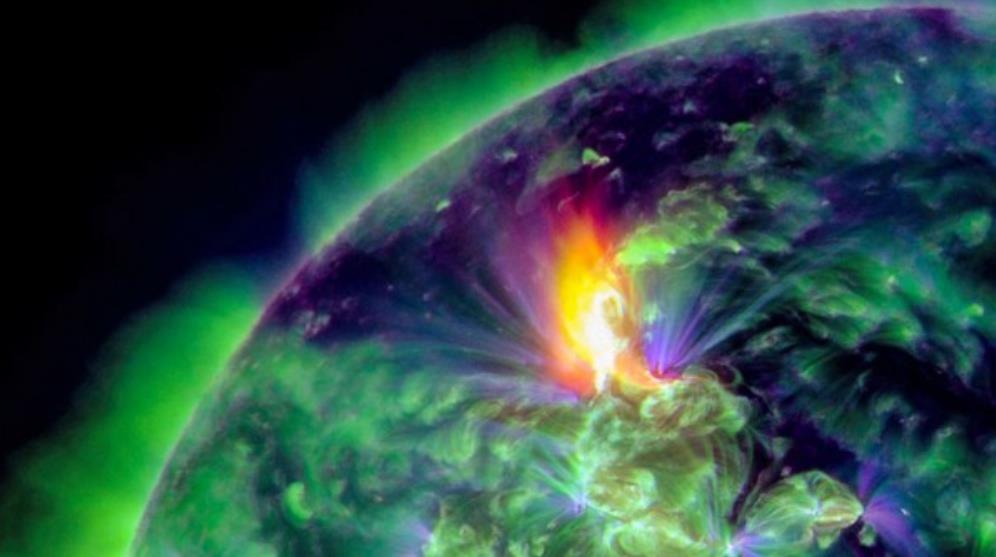 When Is The Sun's Next "Superflare" Due?
When Is The Sun's Next "Superflare" Due? The odds are small in any given year, but there's no room for complacency. Here's an excerpt from
Science/AAAS: "...
But when can we expect the next superflare? Astronomers
at the Harvard-Smithsonian Center for Astrophysics in Cambridge,
Massachusetts, studied 84 sunlike stars and observed 29 of these
supersized solar flares over a 4-year period to find out how often they
occur. Good news! A star like our sun will probably experience such an
extreme flare only once every 250 to 480 years—astronomers say 350 years
is the most likely scenario..."
Image credit above: NASA/SDO/GOES-15.
Do You Have What It Takes To Predict The Future? The Reality Behind Becoming a Meteorologist. Thanks go out to
The Vane
for providing a little perspective and background on the difficult
science meteorologists deal with every day; here's a clip: "...
A new
reality show is throwing folks in front of a green screen and jamming
them into wind tunnels to see if they have the guts to be America’s next
great weatherperson. It’s common to brush off meteorologists as a group
of lying guessers, but it takes an incredible effort to accurately
predict the future every day. Meteorologists on Twitter are rumbling
with an uneasy curiosity over a new reality show on a cable network
famous for Conan and preempting episodes of Seinfeld to show midday
baseball games..."
Eco-Friendly 3D Printed Supercar. Will the day come when you can "print" your next vehicle? Don't laugh - expect the unexpected. Here's the intro to a story at
Reuters: "
A
California automotive start-up is hoping their prototype supercar will
redefine car manufacturing. The sleek race car dubbed 'Blade' didn't
come off an assembly line - but out of a 3D printer.
Kevin Czinger of Divergent Microfactories has spent most of his career
in the automotive industry. One day he realized that no matter how
fuel-efficient or how few tailpipe emissions the modern car has, the
business of car manufacturing is destroying the environment..."
Once In A Lifetime Shot: A Tornado and a Rainbow.
In my 40+ years tracking weather I can't remember ever seeing a photo
like this. Spectacular is a serious understatement. Details via The Weather Network: "...On
a cloudy day in May, amateur meteorologist Jason Blum captured a
once-in-a-lifetime shot, featuring two very different atmospheric
phenomena in the same frame. Blum was on a storm chase near Eads,
Colorado with his 14-year-old son when they found themselves less than a
kilometre away from a tornado and a rainbow . "What I love about storms
is their power," Blum says in a press release..."
TODAY: Sweaty sunshine. Dew point: 73. PM Heat Index: 95-100F. Winds: SW 8. High: 92
FRIDAY NIGHT: Warm and sticky. Low: 72
SATURDAY: Hot sun, windy. Drier day of the weekend. Winds: South 10-20. High: 92
SUNDAY: Few hours of showers, T-storms. Wake-up: 73. High: 84
MONDAY: Sunny, less humid. Dew point: 61. Wake-up: 65. High: 80
TUESDAY: Showers and T-storms develop. Wake-up: 62. High: 79
WEDNESDAY: Still soggy, more showers, T-storms. Wake-up: 65. High: 83
THURSDAY: Wet start, then clearing. Wake-up: 66. High: 82
Climate Stories....
Is The Global Warming "Hiatus" Over? El
Nino and the PDO can mask the larger signals related to greenhouse
gases, but there's little doubt the atmosphere and oceans continue to
warm. Here's a snippet of a timely story and links to research from
NCAR's Kevin Trenberth at
The Conversation: "...
While the rate of surface temperature increase has been mostly upward from about 1920 and the recent rate is not out of step overall,
there are two hiatus intervals with much lower rates of temperature
increase. The first was from about 1943 to 1975, and the second was from
1999 to 2013. In a paper
entitled Has There Been a Global Warming Hiatus?, I find that natural
variability through interactions among the oceans, atmosphere, land and
ice can easily mask the upward trend of global temperatures. For climate
scientists to improve climate models, better understanding of these
variations and their effect on global temperatures is essential..."
Graphic credit above: "
Seasonal
global mean surface temperatures from NOAA, after 1920, relative to the
mean of the 20th century. The seasons are defined as December-February,
etc. A 20-term Gaussian filter is used to show the decadal variations
(heavy black curve). (middle) The seasonal mean Pacific Decadal
Oscillation (PDO) anomalies, in units of standard deviation. The
positive (pink) and negative (light blue) PDO regimes are indicated
throughout the figure. (bottom) Decadal average anomalies (starting
1921-1930) of GMST (green) along with piecewise slopes of GMST for the
phases of the PDO (yellow). Kevin Trenberth/Data from NOAA, Author provided."
If There Really Was a "Pause", the Atmosphere Just Hit Play. Here's a clip from a Washington Post story authored by Chris Mooney: "...Not
that any of this is good news for skeptics — Trenberth says that the
warming trend seems to have since resumed, that temperatures rose in
2014, and that they are spiking even more this year. He expects that
global warming advances “more like a rising staircase than a monotonic
rise” — and has previously suggested
that we’re in the middle of a “jump” in temperatures. The debate
matters, though, because Trenberth wants to people to see that there
really are major natural wobbles that will always prevent the global
temperature rise from simply being a linear one..."
Shell Arctic Drilling "Risky" - Ex BP Boss Lord Browne. Yes, what can possibly go wrong. Here's an excerpt from the
BBC: "
Drilling
for oil in the Arctic may harm Shell's reputation and cost it dear, the
former BP boss Lord Browne has said. Shell has just started preliminary drilling
in Alaska’s Chukchi Sea after several setbacks. The firm’s CEO Ben van
Beurden said he had gone on a “personal journey” before deciding the
risks were containable. But Lord Browne urged caution, saying the
company's long-term reputation could be affected..." (File photo: (Daniella Beccaria/seattlepi.com via AP).
Green Groups: Arctic Drilling "Inconsistent" with Obama's Climate Change Crusade. Here's an excerpt from
fuelfix.com, courtesy of The Houston Chronicle: "
The
Obama administration’s fight against climate change is undermined by
Shell’s quest for new oil reserves in the Arctic Ocean,
environmentalists warn in a report Thursday. The ongoing Arctic drilling
is “inconsistent” with efforts to stay within a global carbon budget by
limiting fossil fuel use and restraining greenhouse gas emissions to
keep global warming to less than 2 degrees Celsius, according to the
assessment. “If we are serious about tackling the global climate crisis,
we need to stop exploring, expanding and ultimately exploiting fossil
fuels,” says the report from Greenpeace and Oil Change International, which promotes a transition to alternative energy sources..."
Study Finds "Detectable Effect" of Climate Change in Texas' Devastating May Floods.
Extreme weather attribution is an emerging field, but there is a
growing body of evidence that a warmer (wetter) atmosphere is spiking
many storms, including the biblical floods that struck Texas and
Oklahoma in late spring. Here's an excerpt from
ThinkProgress: "
A
new study directly links human-caused global warming to the
catastrophic flooding in Texas and Oklahoma this spring. In May, more
than 35 trillion gallons
of water fell on Texas — enough to cover the entire state in eight
inches of water. More than two dozen people were killed, and it was the wettest single month on record in both Texas and Oklahoma. A new peer-reviewed study
from Utah State and Taiwanese researchers concluded, “There was a
detectable effect of anthropogenic [manmade] global warming in the
physical processes that caused the persistent precipitation in May of
2015″ over the southern Great Plains...”
File photo above: "
Tex Toler watches the Llano River rise on Friday, May 29, 2015 in Llano, Texas, after another round of heavy rains." (Jay Janner/Austin American-Statesman/TNS).
5 Ways To Convince People To Actually Do Something About Climate Change.
Co.Exist at Fast Company has an upbeat story with some good information - here's an excerpt on why it pays to keep it local, local, local: "...
Instead
of talking about global effects, Stoknes says we'll have more success
by targeting messages to local areas. After Hurricane Sandy, New Yorkers
get sea level rise; Californians now get what long-term drought looks
like. Messages can build on those local stories, or on current health
effects, like asthma that's already a result of air pollution. Activists
can also use local pride to ramp up solutions. One suggested message:
"Never mind the fighting in Congress—here in Louisiana we need to build
our own preparedness and resilience..."
Folks In These U.S. States Don't Believe In Global Warming. It's not a matter of "belief" - it's acknowledging the science and the trends; here's an excerpt from
Marketwatch.com: "...
The
map provides estimates of what Americans believe about climate change,
their perceptions of climate risks and support for policy options, with
breakdowns for all 50 states, 435 congressional districts, and
3,000-plus counties in the U.S. Nationally, an average of 63% of adults
‘believe global warming is happening,’ the study shows. County-level
estimates of belief that global warming is happening range from a low of
43% in Trimble County, Kentucky to a high of 80% in New York County,
New York. Based on the map, these are the states where the fewest number
of people agree that global warming is happening, followed by the
states where the most people agree it’s happening..."
* Map courtesy of
Yale Project on Climate Change Communication.
"Future Generations" Sue Obama Administration Over Climate Change. I'm still waiting for the Mother of All Class Action Lawsuits to materialize. Here's an excerpt from
MSNBC.com: "
One
kid says that his family’s farm has been damaged by drought and
wildfire. Another says that his childhood home has been devalued by
rising sea levels. A third alleges an assault on his whole culture as
man-made climate change upends the natural world. These and 18 other
“youth plaintiffs” (ages 8 to 19) sued the federal government on
Wednesday, walking a first-of-its-kind constitutional claim up the
courthouse steps in Eugene, Oregon. The kids argue that inaction on
climate change is a violation of their right to life, liberty and
property. And they demand that President Obama, seven federal
departments and the Environmental Protection Agency act immediately to
preserve the climate for “future generations...”
Muslim Scholars Prepare Call For Action on Climate Change.
Bloomberg Business has the story; here's an excerpt: "
Islamic
scholars and religious leaders are preparing a call for action on
climate change that will say it’s the religious duty of the world’s 1.6
billion Muslims to fight global warming. The declaration will be made in
Istanbul next Tuesday during a two-day meeting in the Turkish city
coordinated by three religious-environmental groups, according to
Climate Action Network, a network of non-governmental organizations..."
Is Climate Change A Factor in Walleye Drought on Lake Mille Lacs? Fish biologists interviewed for a
New York Times article brought it up as one of several possible explanations as Mille Lacs continues to warm; here's an excerpt: "...
There
is little agreement on the reasons for the apparent drop-off in the
walleye population, but experts at the state’s natural resources agency
say that larger prey — especially large walleye — appear to be eating
younger walleye in alarming numbers. This could be because of a shortage
of other fish like perch or tullibee, species that large walleye
typically like to eat, but that have struggled to survive as lakes in
Minnesota have gradually warmed as a result of climate change, some fish
biologists say..."
Photo credit above: "
A
26-foot fiberglass walleye statue greets visitors at Mille Lacs Lake in
Garrison, Minn. The state has ordered an early end to the walleye
fishing season amid concerns about a declining population." Credit Jenn Ackerman for The New York Times.
2015 Global Temperatures Are Right In Line With Climate Model Predictions. Here's a snippet of a
Guardian story from St. Thomas climate scientist John Abraham: "...
The
heavy dashed line is the average predicted temperature including
updated influences from a decrease in solar energy, human emitted
heat-reflecting particles, and volcanic effects. The dashed line is
slightly above the colored markers in recent years, but the results are
quite close. Furthermore, this year’s temperature to date is running
hotter than 2014. To date, 2015 is almost exactly at the predicted mean
value from the models. Importantly, the measured temperatures are well
within the spread of the model predictions..."
Graph credit above: "
Comparison of the most recent climate model simulations with actual global surface temperature measurements." Created by Gavin Schmidt.
Study Shows No Link Between Sunspots and Climate Change.
The Space Reporter has the article; here's an excerpt: "
A
new study conducted by a team of researchers from the US, the UK, and
Germany shows solar activity has not increased significantly since the
18th century and is therefore not responsible for rising global
temperatures on Earth. Many who reject the notion that human activity is
responsible for global warming have long attributed that warming to
sunspots resulting from increased solar activity. Presented at the
International Astronomical Union’s (IAU) 29th General Assembly in
Honolulu on Tuesday, the new study discredits a method of counting
sunspots first devised during the 1990s as “fundamentally flawed...” (File image: NASA).
First Click: Climate Change Deniers, Like Fanboys, Don't Care About Your Science. For some there will never be enough evidence, according to an article at
The Verge; here's an excerpt: "...
When
you think about it, climate change deniers aren’t too different from
flat-earthers, birthers, or people that believe the moon landings were
filmed inside a Hollywood studio. Kahan's science shows that your scientific arguments don't matter
to people with a cultural predisposition to distrust the powers at be.
It also helps explain the futility of arguing with fanboys...The
flame wars found in the internet comments on gadget and environmental
articles are really just the flailing insecurities of individuals
rationalizing their own choices.."

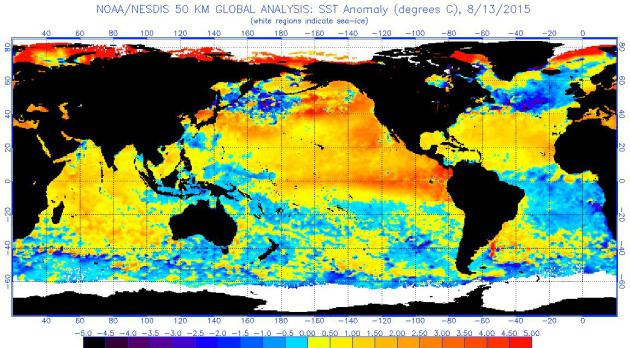


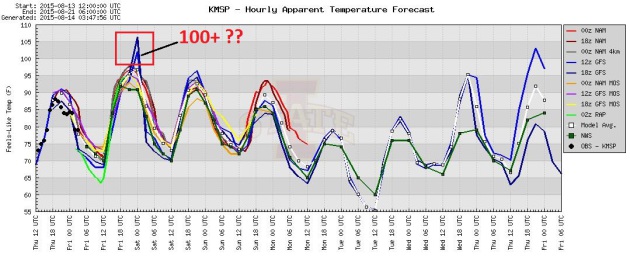
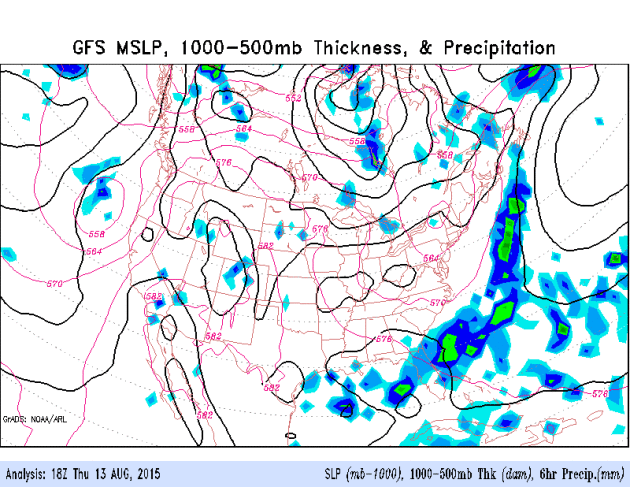
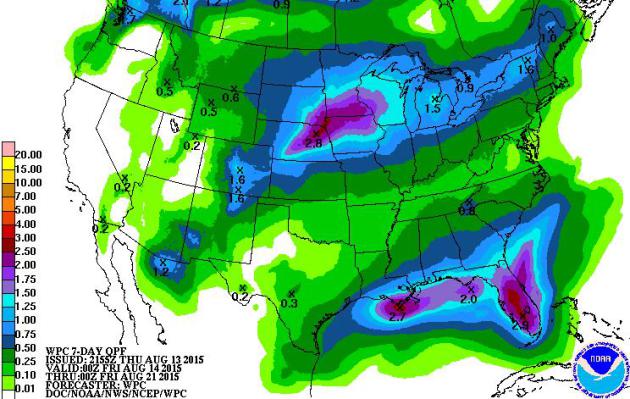


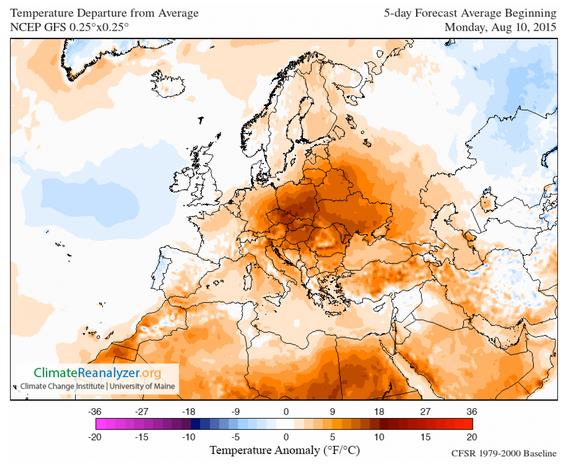
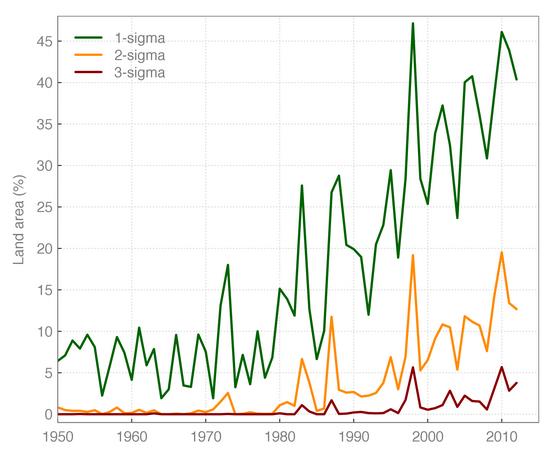
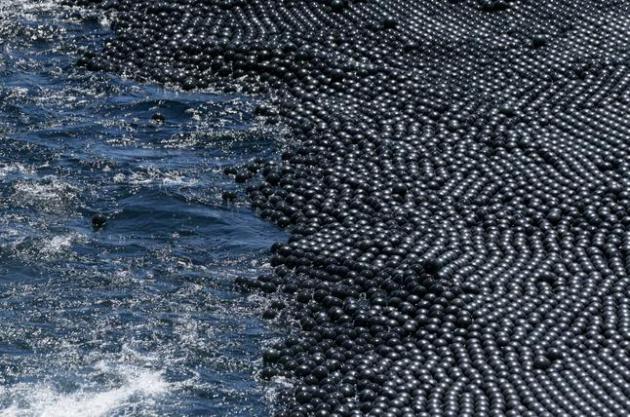

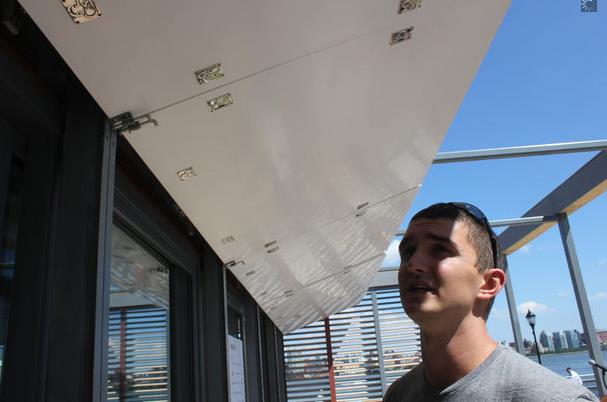


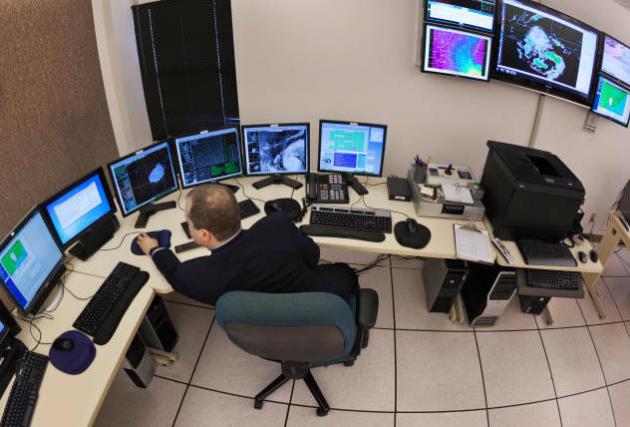

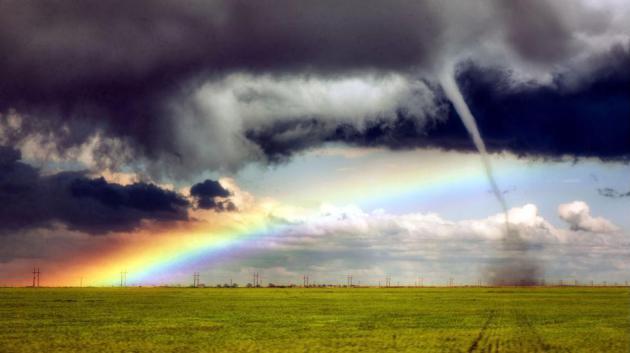


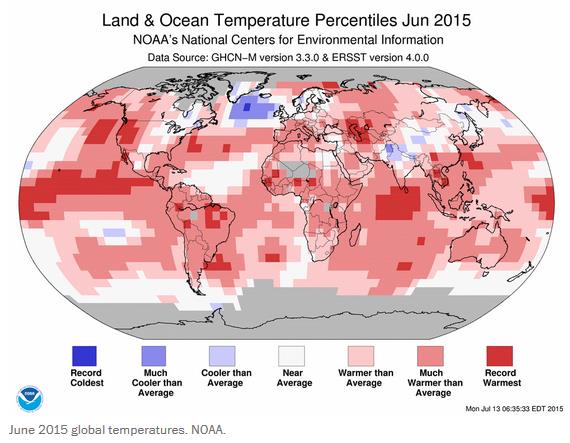
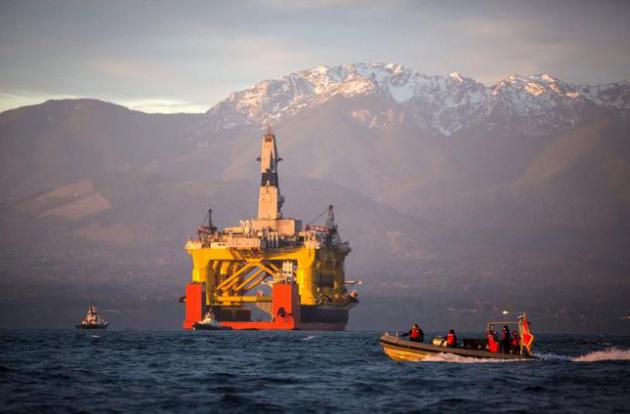


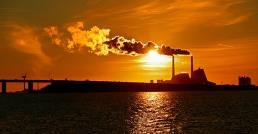
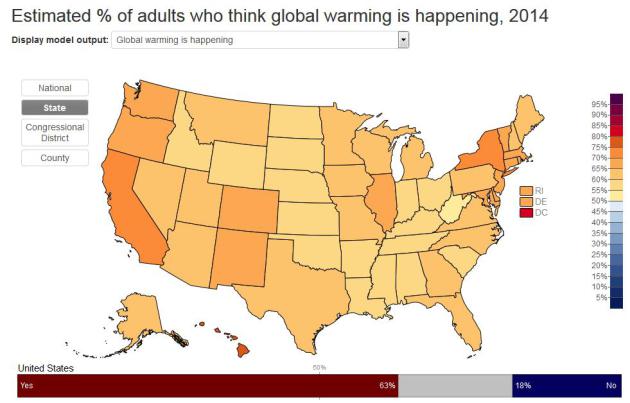

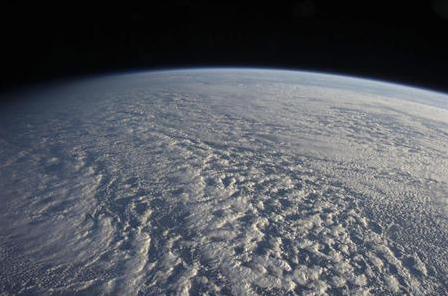




No comments:
Post a Comment